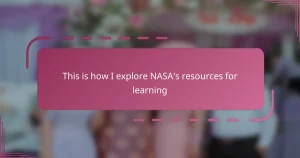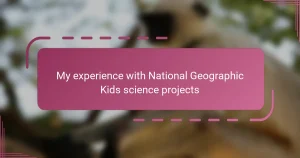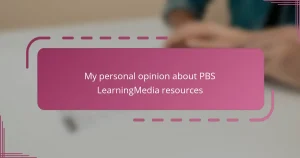Key takeaways
- Coursera offers flexible online learning options, making education accessible for busy parents and children.
- Engaging course material and interactive content stimulate curiosity and independence in kids.
- Involving children in course selection and setting manageable goals enhances motivation and enjoyment.
- Reflecting on learning outcomes together fosters a deeper understanding and builds critical thinking skills.
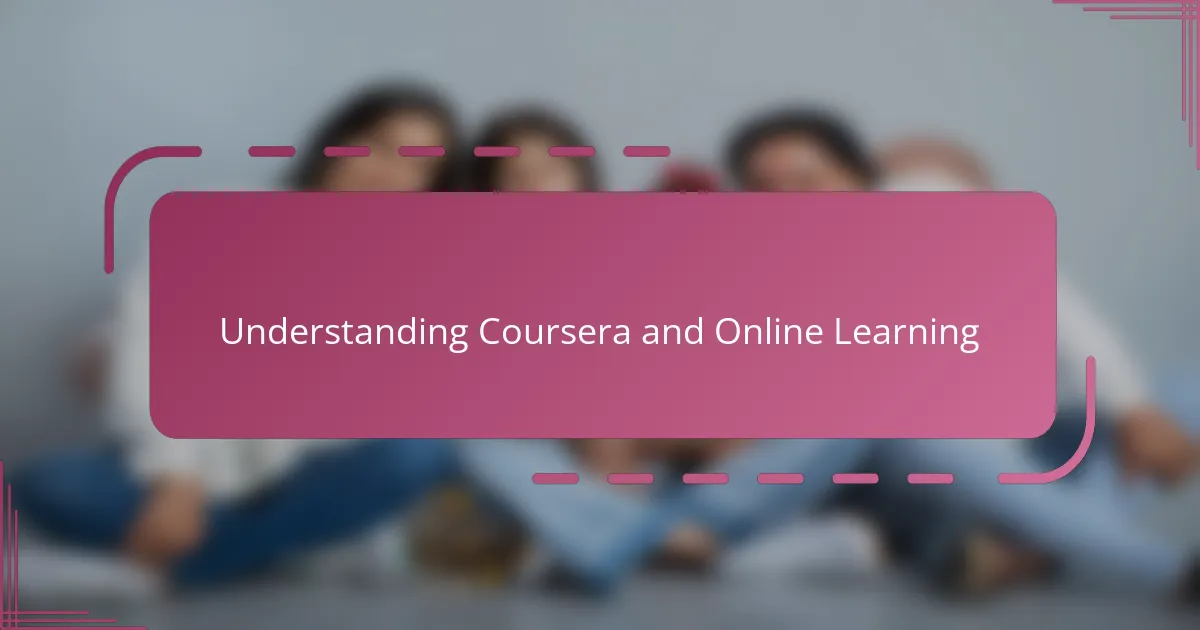
Understanding Coursera and Online Learning
When I first explored Coursera, I was struck by how accessible and flexible online learning can be. Unlike traditional classes, Coursera lets you study at your own pace, which is a game-changer when juggling parenting responsibilities. Have you ever wished for more hours in the day? Online courses can give that feeling by fitting education seamlessly into your routine.
What really impressed me about Coursera is the range of topics and expert instructors available from top universities worldwide. It feels reassuring to learn from trusted sources without having to leave home. I often find myself inspired not just by the material, but by the convenience that allows me to grow personally while still being present for my family.
Online learning does require some self-discipline, though. I’ve learned that setting small goals helps me stay motivated—just a few minutes a day can make a real difference over time. Do you find it challenging to carve out time for yourself? I’ve been there, and integrating Coursera into our daily life has been surprisingly manageable when approached with realistic expectations.
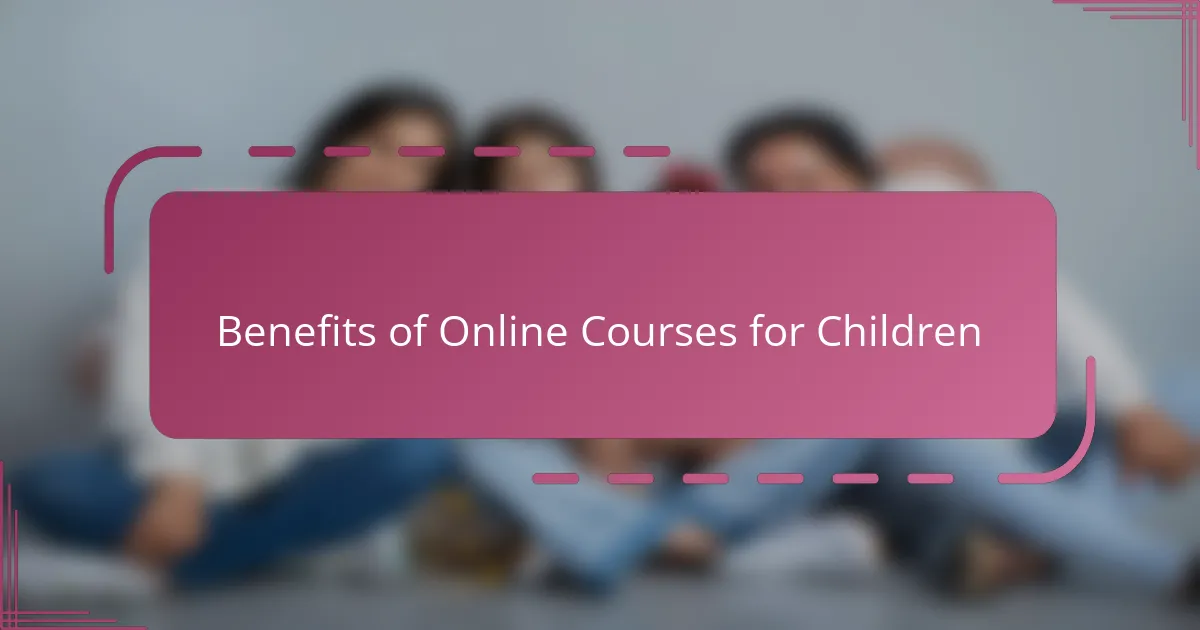
Benefits of Online Courses for Children
One of the biggest benefits I’ve noticed with online courses for kids is how they spark curiosity in a way that feels natural. When my child found a course about space exploration on Coursera, their questions multiplied, and learning became an adventure rather than a chore. Have you ever seen your child’s face light up when something just clicks? That’s the magic of interactive and well-designed online content.
Flexibility is another huge plus. Unlike fixed school schedules, these courses adapt to our family’s rhythm. I appreciate that my child can pause and revisit lessons whenever they want, which makes learning less stressful and more enjoyable. It’s liberating to see education fitting into our lives, not the other way around.
What surprises me most is how online learning builds independence. Watching my child take charge of their progress, set small goals, and celebrate milestones is incredibly rewarding. Have you noticed how empowering it is when children realize they can learn on their own terms? I believe this confidence is one of the greatest gifts online courses can offer.
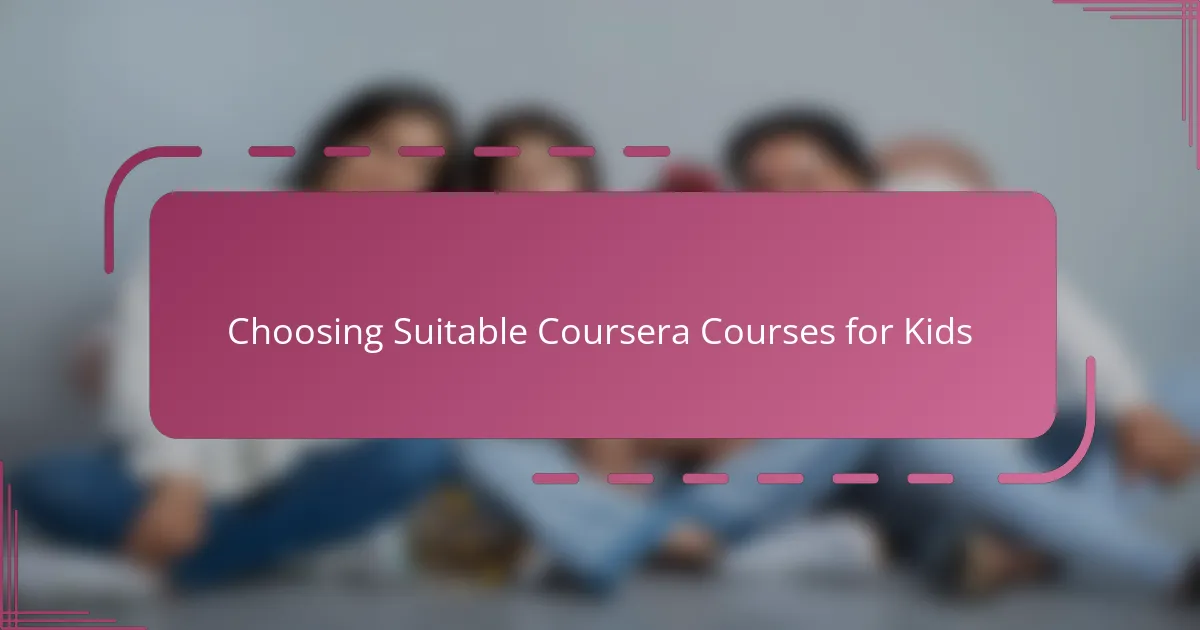
Choosing Suitable Coursera Courses for Kids
Selecting the right Coursera courses for kids isn’t just about picking subjects; it’s about matching their interests and learning style. I’ve found that when I involve my child in the decision, asking what excites them, the courses become more meaningful. Have you tried letting your child explore the course catalog together? It’s a small step that makes a big difference in engagement.
I also pay close attention to the course level and length because kids need manageable chunks that won’t overwhelm them. When we started with shorter, beginner-friendly courses, my child was eager to keep going rather than frustrated. It taught me how crucial it is to balance challenge with accessibility, especially when adding something new to their routine.
Another thing I consider is the course format—videos, quizzes, or interactive projects. My child tends to respond better to hands-on activities, so I prioritize those courses that offer practical learning. Does your child prefer watching and listening, or do they like doing things themselves? Knowing this helps me pick courses that feel like fun instead of work.
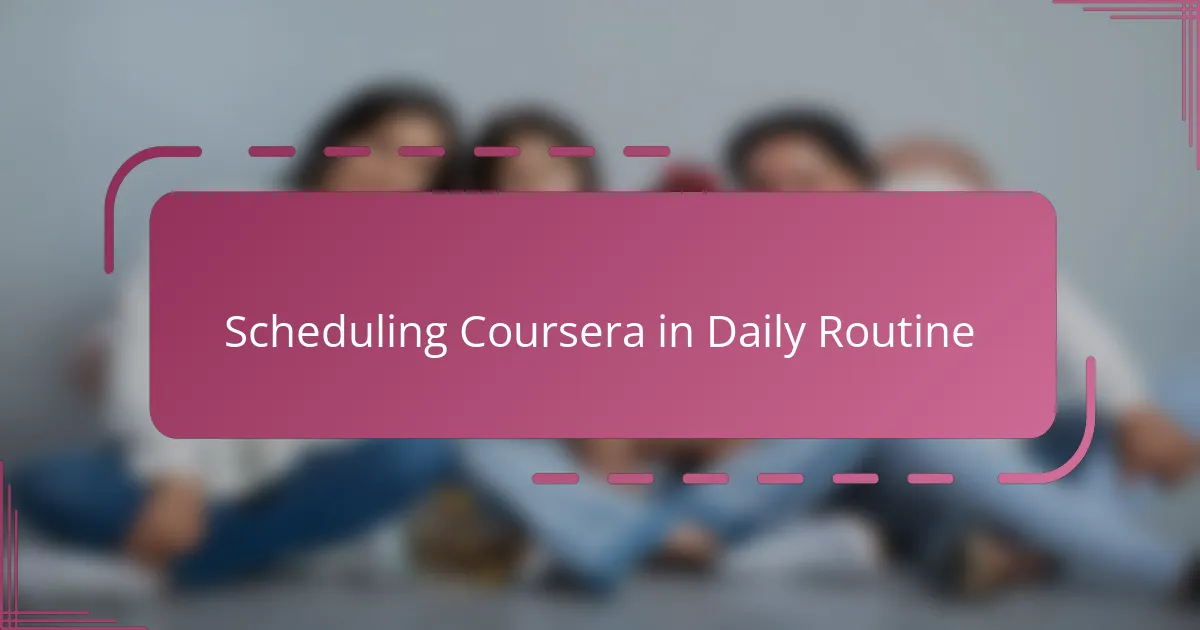
Scheduling Coursera in Daily Routine
Finding the right moment to fit Coursera courses into our busy day took some trial and error. I realized that early mornings work best for me—those quiet minutes before the household wakes up become my learning sanctuary. Have you ever noticed how peaceful those moments can be? It’s incredible how a small routine change can make a big difference.
Sometimes, I schedule short sessions during my child’s independent playtime or after dinner when everyone is winding down. These pockets of time aren’t long, but they create consistency, which I’ve learned is key to making progress without feeling overwhelmed. How often do we underestimate the power of just 15 minutes? I’m convinced those little slots add up more than we expect.
What surprised me most is how flexible the Coursera platform is with my schedule. If a day gets hectic, I simply pause and resume when things calm down. This freedom takes away a lot of pressure and lets me stay committed without guilt. Have you experienced this kind of flexibility before? For me, it’s been a game-changer in balancing learning with parenting.
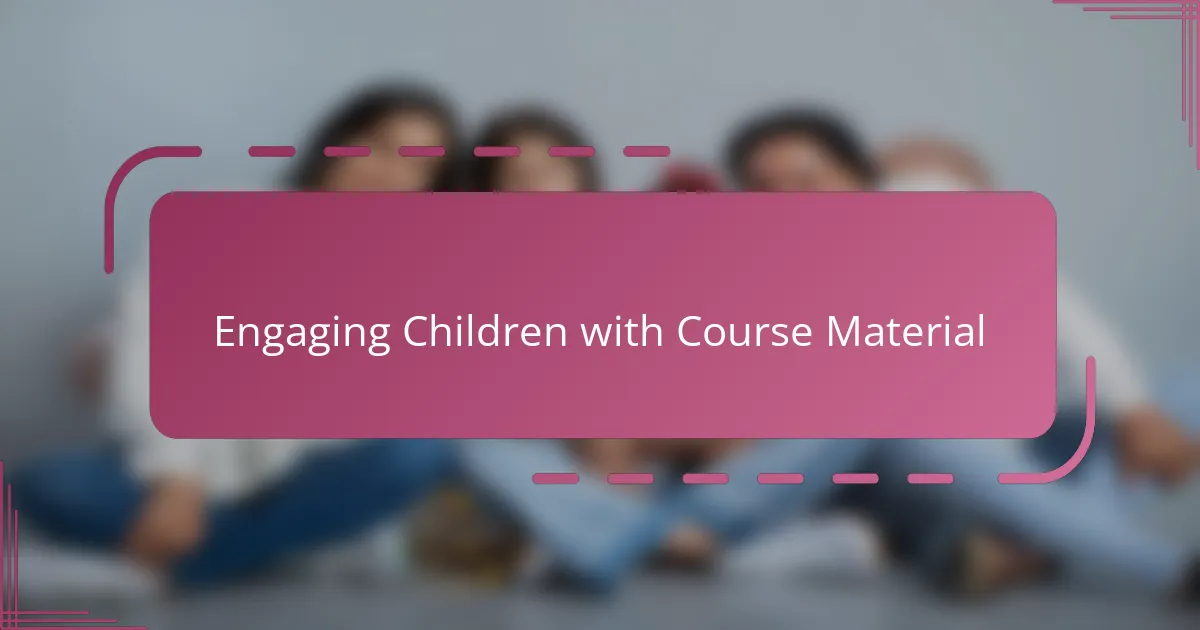
Engaging Children with Course Material
Keeping children engaged with course material can be challenging, but I’ve found that relating lessons to their everyday experiences makes a huge difference. For example, when my child was learning about ecosystems, we took a walk outside to spot plants and insects mentioned in the course. Have you ever seen your child’s eyes widen when they realize that what they learn online connects directly to the world around them? It’s moments like those that make abstract concepts come alive.
I also notice that breaking down content into shorter, interactive segments keeps my child focused. Instead of overwhelming them with a 30-minute video, we watch a 5-minute clip and then pause to talk about it or try a quick activity. This approach keeps enthusiasm high and stops learning from feeling like a chore. What’s your experience with keeping kids attentive during screen time? For me, mixing teaching with movement or hands-on tasks works wonders.
Another trick I use is encouraging my child to ask questions and express opinions about the material. When I treat their questions as valuable and explore answers together, it creates a positive learning atmosphere. I remember one time my child challenged a fact from a history course, sparking a mini research project we both enjoyed. Doesn’t it feel empowering when children become active participants in their education rather than passive listeners? I believe this curiosity is the foundation of lifelong learning.
![]()
Tracking Progress and Encouraging Completion
Tracking progress has been a key factor in keeping both me and my child motivated with Coursera courses. I make it a habit to check the course progress bar together, celebrating every small completion. Have you ever noticed how a simple visual reminder of how far you’ve come sparks a fresh burst of enthusiasm? For us, it turns learning from a vague goal into an achievable journey.
Sometimes, I set gentle deadlines—not to pressure, but to create a sense of rhythm. When my child knows we’ll review the course progress on Fridays, it adds a little excitement and a sense of accomplishment. Doesn’t it feel good to wrap up a week with a tangible win? I’ve found this makes finishing courses less daunting and more rewarding.
Encouragement is another secret weapon. I often praise effort over perfection, reminding my child that every step forward counts. When they hit a tricky quiz or tough assignment, I share my own stories of struggling and pushing through. Have you tried sharing your learning bumps? This openness builds resilience and makes finishing courses a shared adventure, not a solo race.
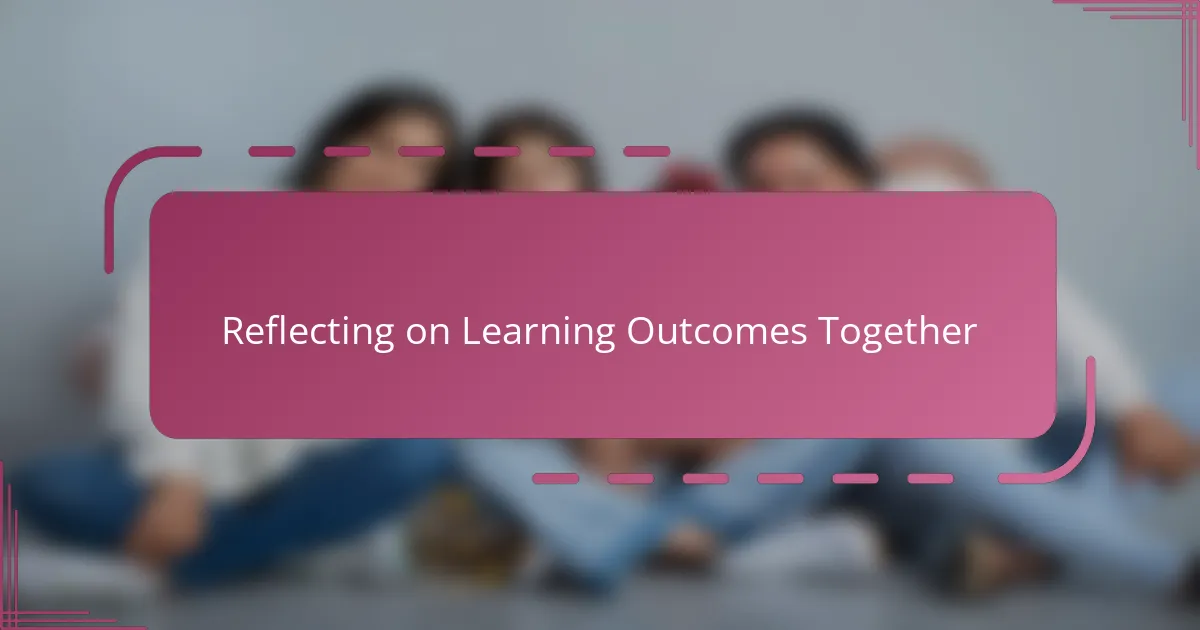
Reflecting on Learning Outcomes Together
Reflecting on learning outcomes together has become a cherished ritual in our household. After completing a course module, I sit down with my child and ask what surprised them most or what they found challenging. Have you noticed how these conversations bring deeper understanding and even spark new questions? For me, it transforms learning from a solo task into a shared discovery.
Sometimes, I’m amazed at how reviewing what we’ve learned helps my child connect the dots across different subjects. We might talk about how a science lesson relates to daily life or discuss the bigger picture of a history topic. This reflection doesn’t just reinforce knowledge—it builds critical thinking and communication skills. Don’t you find that discussing ideas aloud makes them stick better? That’s certainly been my experience.
What I value most is how this practice nurtures curiosity and confidence. When I encourage my child to express what they’ve learned in their own words, I see pride light up their face. It’s rewarding to watch them realize their progress and take ownership of their education. Have you tried reflecting together after learning? It’s one of the simplest yet most powerful ways to deepen understanding and stay motivated.
